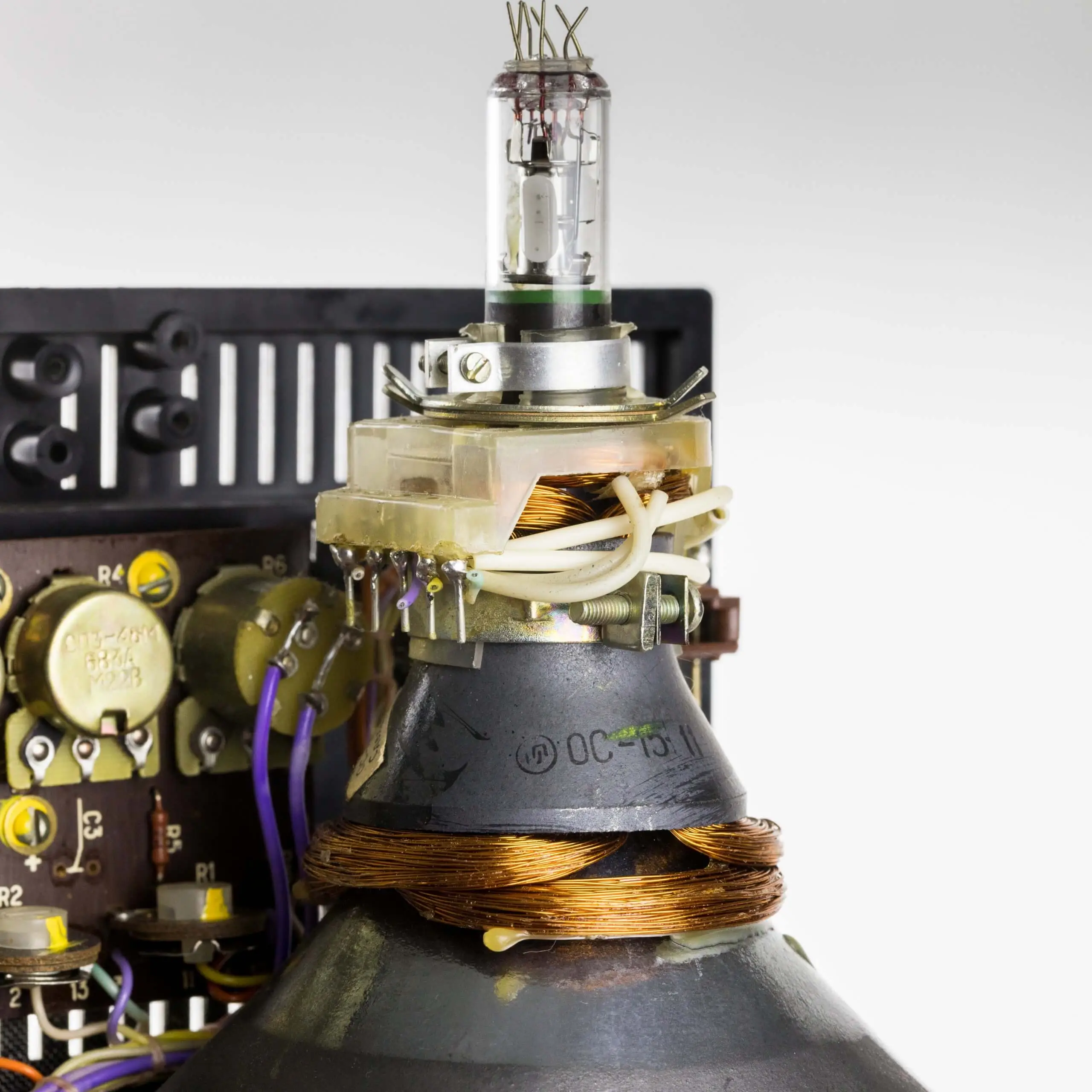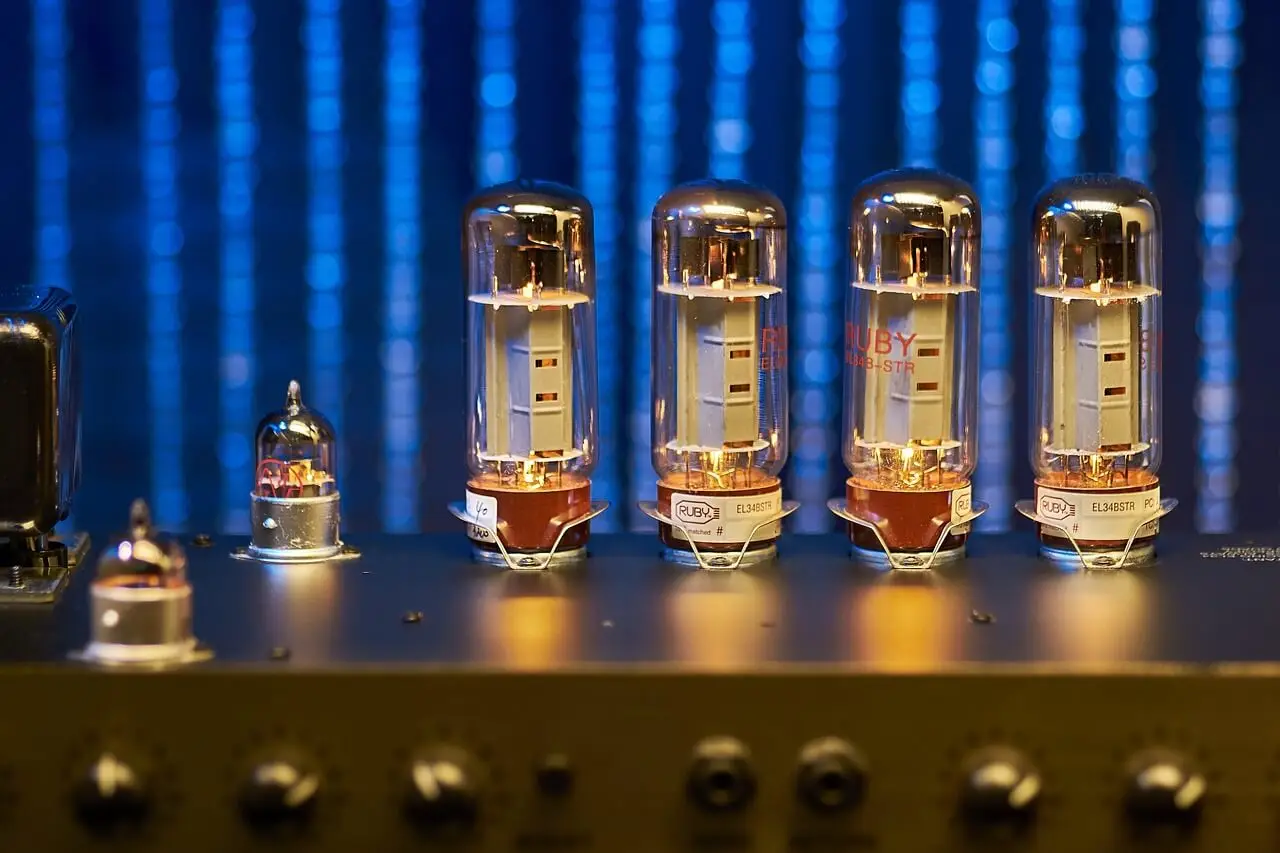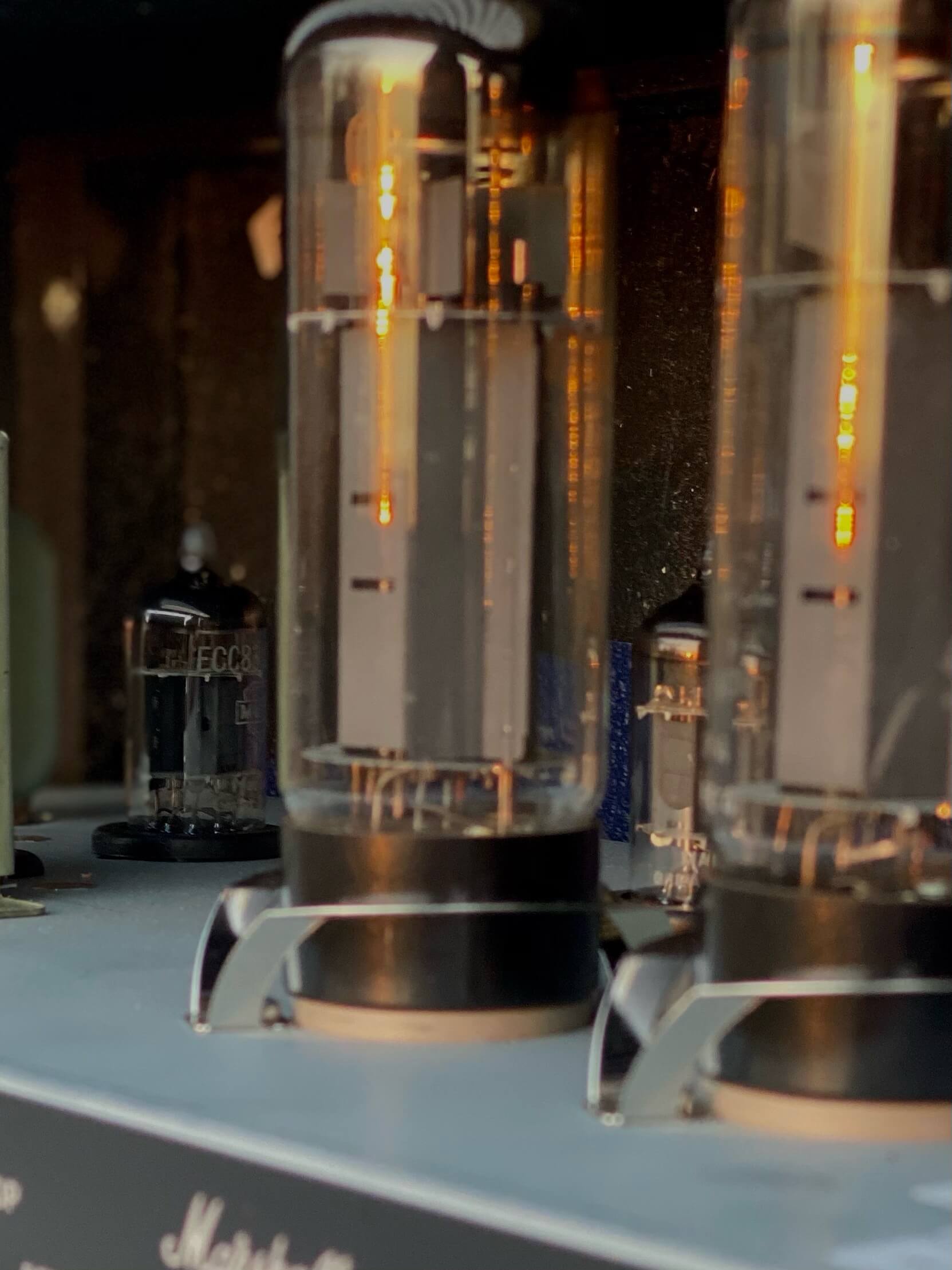Unlocking the Past: Vacuum Tubes in Early Atomic Research and Particle Accelerators
The world of atomic research and particle accelerators might seem like the stuff of science fiction, but it’s a realm that’s been shaped by some surprisingly old-school technology. Before the advent of semiconductors and integrated circuits, it was the humble vacuum tube that ruled the roost. From radio sets to nascent computers, they were everywhere. But their role in advancing our understanding of the atomic world is often overlooked. With the popularity and recent release of the movie “Oppenheimer,” we thought it was appropriate to review this part of vacuum tube history today.
Vacuum tubes aren’t just relics from a bygone era; they’ve played a pivotal role in unlocking secrets at the very core of existence itself. They’ve been instrumental to key discoveries in particle physics, helping researchers peer into an unseen world beyond our everyday reality. This article delves into how vacuum tubes contributed to early atomic research and powered particle accelerators – machines that have revolutionized our understanding of matter and energy. It also examines their lasting impact on scientific equipment design and why their legacy still resonates in modern physics today.
Pioneering Technologies: Vacuum Tubes in Early Atomic Research

Vacuum tubes played a pivotal role in early atomic research, setting the foundations for our current understanding of the atomic world. Tubes were absolutely critical during the infancy of nuclear physics. In fact, they served as workhorses in laboratories around the globe, assisting scientists in deciphering the mysteries of atoms and subatomic particles. The reliable vacuum tube was a key instrument that powered early experiments and brought forth revolutionary discoveries about the nature of matter.
As we delve into this fascinating “Tube Evolution,” it’s incredible to realize just how instrumental these devices were. Developed in the 19th century primarily for radio technology, vacuum tubes evolved over time to take on more complex scientific tasks. With their unique ability to control electric current flow in high vacuum between electrodes, they emerged as essential tools for detecting and measuring radiation. This function was especially crucial during investigations into radioactive substances such as radium and uranium where researchers needed precise measurements.
The story behind vacuum tubes is indeed a testament to technological ingenuity transforming science. It’s not simply about an old piece of equipment gathering dust on a museum shelf but rather an unsung hero that facilitated groundbreaking advancements within atomic research. They made possible everything from Ernest Rutherford’s atom model to Niels Bohr’s quantum theory; without vacuum tubes paving the way for these monumental breakthroughs, our comprehension and manipulation of atoms may have been drastically different today.

Accelerating Discoveries: The Crucial Role of Vacuum Tubes in Particle Accelerators
It’s undeniable that the advent tubes significantly propelled our understanding and manipulation of subatomic particles, fueling a surge in scientific breakthroughs. Vacuum tubes, considered obsolete by some, took center stage as indispensable tools in early particle accelerators. These devices were pivotal to the research involving high-speed electrons and ions. The functionality and effectiveness of vacuum tubes lay not only in their ability to produce high voltage but also in creating an environment void of air resistance which enabled particles to accelerate at unprecedented speeds.
The concept of “Tube Lifespan” was crucial during this era given the intense conditions under which particle accelerators operated. The longevity and durability of vacuum tubes directly influenced the success rate and efficiency of atomic experiments. Early researchers had to grapple with frequent replacements due to tube burnouts or failures caused by excessive heat generation from high voltage applications. Pioneers like Ernest Lawrence, who developed cyclotron – an early form of particle accelerator – faced significant challenges regarding effective cooling mechanisms that would prolong tube lifespan without compromising on performance.
Despite these challenges, scientists remained undeterred, continuously improving upon existing designs while exploring novel methods for extending tube lifespan. This persistence ultimately led to advancements like improved insulation techniques and advanced cooling systems — innovations that not only increased tube longevity but also boosted overall machine efficiency. As a testament to their enduring value, today’s modern-day renditions of particle accelerators continue relying on vacuum technology despite leaps in solid-state electronics; unequivocally attesting to the lasting impact vacuum tubes have made on atomic research and beyond.
Revolutionizing Scientific Equipment: Vacuum Tubes at the Heart of Experimental Apparatus
Beyond the realm of high-speed subatomic particles, there’s no doubt that these valves have reshaped our scientific apparatus landscape. Vacuum tubes, with their glowing filaments and glass encasements, have become an integral part of many crucial experimental tools. They’ve transformed countless laboratories around the world into hubs of groundbreaking research, pushing the boundaries of what was previously thought possible.
- Their reliability has fostered a sense of trust among researchers who can depend on them for accurate and consistent results.
- The ease of tube maintenance means they can be kept in top working condition without extensive technical expertise or expensive equipment.
- Finally, their adaptability has allowed for endless possibilities in experimental design – making vacuum tubes truly revolutionary.
Vacuum tubes essentially gave birth to modern electronics; without them, we wouldn’t have computers or radio communications as we know them today. Moreover, they continue to prove their worth within the walls of advanced laboratories worldwide. Every day, scientists rely on these humble devices to carry out intricate experiments that shed light on the mysteries hidden deep within matter itself. Tube maintenance is key here: ensuring optimal performance allows researchers to collect precise data and draw solid conclusions from it.
When considering all this evidence before us, it becomes clear that vacuum tubes are more than just relics from a bygone era – they’re workhorses in our quest for understanding the universe and our place within it. From facilitating breakthroughs in atomic research to driving particle accelerators’ operations, vacuum tubes persistently prove themselves indispensable in scientific exploration.
Exploring Subatomic Particles: How Vacuum Tubes Enabled Precise Measurements
Vacuum tubes have opened up a new realm to us, enabling us to explore and understand subatomic particles with unparalleled precision. The vacuum tube innovations were crucial in this exploration. These tubes, essentially an empty space inside a sealed glass container where air has been removed to create a vacuum, allow for precise measurements and control of electrons. This was significant because it allowed scientists to observe and detect subatomic particles that were previously invisible.
These “Tube Innovations” transformed our understanding of atoms and their constituent parts – the elusive subatomic particles. Vacuum tubes became an essential tool in particle accelerators, machines that propel charged particles at high speeds along a set path. They enabled scientists to measure these accelerated particles with incredible accuracy, allowing them not only to confirm theories about particle behavior but also discover entirely new ones. It was through this precise observation made possible by vacuum tubes that we first came face-to-face with quarks, leptons, bosons – the tiny building blocks of everything around us.
Such advancements in technology have brought forth profound revelations about our universe on its most fundamental level. The legacy of vacuum tubes continues as they are still used today in various scientific equipment despite being overshadowed by transistors and other solid-state devices. Thanks to these humble tubes’ contribution over decades past, we’ve been able to unravel some of the deepest mysteries in physics – from understanding how atoms behave down to exploring exotic realms like quantum mechanics and string theory.
Legacy of Vacuum Tubes in Technology: Impact on Modern Physics and Beyond

Vacuum tubes have left an indelible mark on modern physics, propelling us into an era of unparalleled scientific discovery and innovation. Vacuum tubes, once the cornerstone of early atomic research and particle accelerators, have paved the way for a multitude of technological advancements. From facilitating our understanding of subatomic particles to being integral components in the earliest computers, these devices were instrumental in shaping the course of scientific history.
The “Tube Evolution” traces back to a rich legacy steeped in ground-breaking discoveries and transformative inventions. The vacuum tubes were not only important for their immediate application but also for what they set in motion for future generations. They laid down the foundation stones that led to semiconductors and transistors which are now at the heart of virtually every electronic device we use today. These humbly began as enormous vacuum tube structures but with time and relentless pursuit for enhancement, miniaturized into tiny silicon chips carrying billions of transistors – thus revolutionizing technology forever.
As we look back on the journey from vacuum tubes to sophisticated semiconductors and beyond, it’s clear that each step has been crucial in bringing us where we are today. It’s a game of connecting dots – without one dot you cannot connect to another; each holds its place and makes sense only when seen along with others. In similar fashion, each invention and discovery is significant because it builds upon previous knowledge while simultaneously paving way for new possibilities – all serving our innate desire to explore, understand and evolve.
Conclusion
It’s clear that vacuum tubes played a pivotal role in early atomic research and particle accelerators. They revolutionized scientific equipment, enabling precise measurements of subatomic particles.
These pioneering technologies have left an enduring legacy on modern physics and beyond. Without them, we wouldn’t be where we are today in our understanding of the universe. It reminds us that sometimes it’s the simple tools that make the biggest impact.


